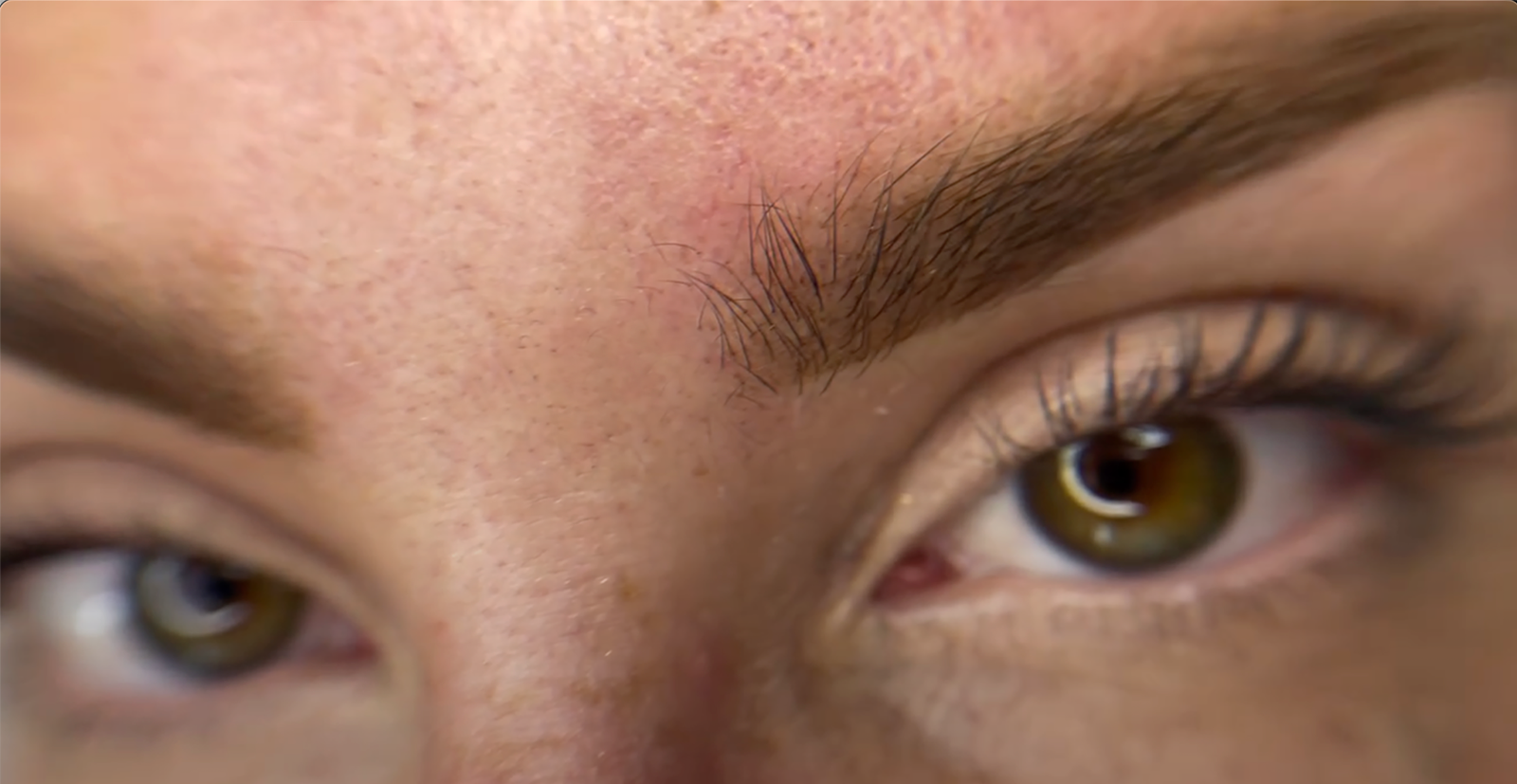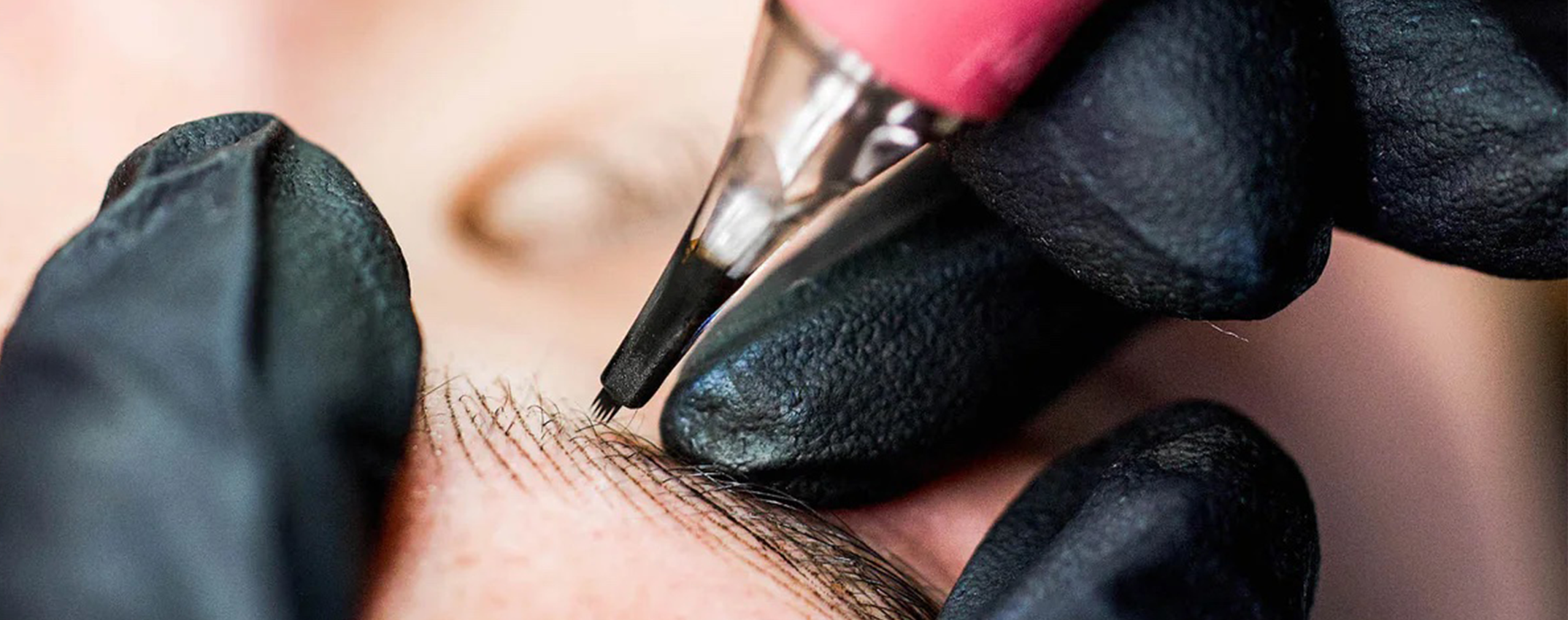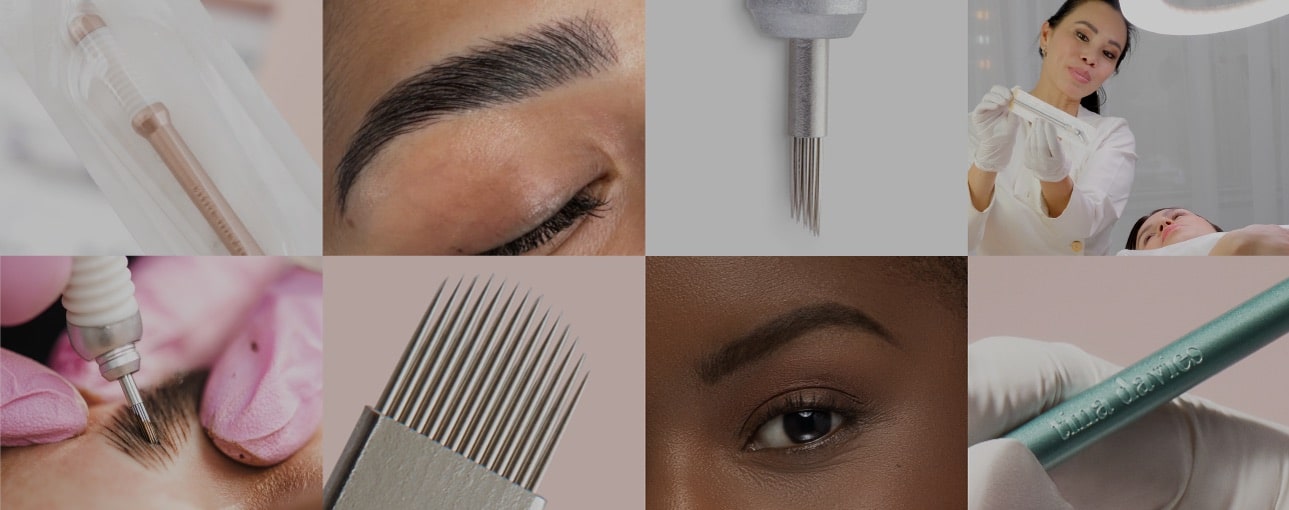
The Most Overlooked Factor in PMU: The Skin
When it comes to perfecting your results, we often focus on products, tools, and techniques. Of course, they matter, but let’s not forget the real MVP that holds it all together—the skin! It’s the canvas, the foundation, the deciding factor in whether that color looks flawless or fades like a forgotten summer fling. The skin’s condition, age, and undertone are game-changers in how pigments settle and stay.
Ready to level up your skin knowledge and get those dream results? Let’s break it down!

Understanding the Main Skin Types
Skin types are like personalities, no two are exactly alike. Some are cool under pressure (hello, dry skin), while others are a little high-maintenance (looking at you, oily skin). Here’s a quick rundown of the main types:

The lucky one—not too oily, not too dry, and a dream to work with. With high elasticity, normal skin can handle any technique, from microblading to ombré or nano, with any pigment typically healing true to color with proper technique. It’s the perfect canvas for beautiful, long-lasting results.

This type is like that friend who just can’t chill—constantly producing extra oil, which can cause pigments to blur or fade faster than you can say “touch-up.” While oily skin may have good elasticity, the excess oil production can hinder pigment retention. For oily clients, opt for higher saturation techniques or stronger pigments, like organic-based hybrids to ensure longer-lasting results.

The wild card of skin types—one moment it’s oily, the next it’s dry, or sometimes it’s both at once in different areas. Balancing your pigment choices and technique is key to avoiding patchy or uneven results. Be sure to focus on the skin type in the specific treatment area to guide your approach.

Dry Skin
Dry skin acts like a pigment sponge, soaking it all up. With generally lower elasticity, it tends to feel tight. Be mindful—use lighter saturation and ensure the skin is well-hydrated before starting. When working with organic-based pigments, consider diluting with shading solution to lessen the concentration. Inorganic-based pigments, however, are excellent for dry skin and can provide long-lasting, vibrant results.

The drama queen of the bunch—easily irritated and prone to redness. Often with reduced elasticity, especially in mature or sun-damaged skin, it’s important to work gently and keep post-care top of mind. Thin and delicate, sensitive skin requires extra caution to avoid irritation or over-saturation.
No matter the skin type, proper aftercare is like the cherry on top—it seals the deal and ensures your pigments settle beautifully. Tailor your aftercare recommendations to the client’s skin type for long-lasting results. Dry skin clients may benefit from more added moisture than oily skin clients, so make sure to offer these clients some Aftercare Healing Gel.

The Relationship Between Skin and Brows

With so many techniques available, brows are truly an artist’s playground—but the skin acts like the gatekeeper, controlling what gets through. The right technique, paired with an understanding of skin behavior, can help you create that perfect arch.
Microblading
- Ideal for young, healthy, dry-to-normal skin types, microblading excels on balanced skin where fine, crisp hair strokes can heal beautifully. However, this technique isn’t the best choice for oily or mature skin, as excess oil can blur those delicate strokes, and mature skin is often too thin or fragile with low elasticity.
- Always use light pressure and be mindful of depth, particularly through the arch and the tail where the skin is thinner, to avoid oversaturation or scarring.
- For manual methods, prevent color build-up over time by choosing inorganic pigments like FADE. If using organic-based pigments like I ❤️ INK, be sure to use a lighter touch, shallower strokes, or consider diluting.

FADE Medium Warm Brown - healed by @microbladed
Ombré or Powder Brows
- These machine-based techniques are versatile and work well for even the most challenging skin types, especially oily skin. By layering soft pixels of pigment, they create a defined, long-lasting result with flexibility in pigment choices, perfect for both bold and soft looks.
- Gradually build layers to control the intensity of shading, focusing on creating a smooth gradient for clients who want a soft but defined look.
- Choose any pigment type that suits your client’s goals and skin. Aim for more saturation with inorganic-based pigments, and keep it light and airy with organic-based pigments.

FADE Medium Neutral Brown - healed by @inna_poldsaar
Nano Strokes
- Nano strokes or nano brows are an advanced technique that offers moderate versatility. They create ultra-fine, hair-like strokes with minimal trauma to the skin, making them suitable for a variety of skin types, including combination and mature skin.
- For oily clients, use a higher saturation technique to help the strokes stay sharp and crisp.
- For the best long-term results, you’ll want to achieve high-saturation strokes with inorganic-based pigments like FADE, and low-saturation, pixelated strokes when using organic-based pigments like I ❤️ INK.
- Negative space is key so be patient when laying nano strokes—allow the skin to heal before adding more strokes to ensure a natural, textured look.

I ❤️ INK LUXE Blonde LUXE - healed by @kd.pmuartist
No matter the technique, always remember that skin type plays a critical role in how the pigment will heal and last. By adjusting your techniques and pigment choices to suit each client’s unique skin, you can deliver beautiful, customized brows every time.
Lips As a Canvas for Color

Envy Nude, Lust Perfect Pink, PIXL 0.30mm 1RL LT & 5RS LT @byharley_x
Lips are a whole different story—age, health, skin tone, and undertones all play a role in the final result. Your final result depends on understanding your client’s lips from the start. Unlike skin, lip tissue is a thin, delicate mucous membrane without the same protective layer, making it more sensitive and prone to dryness.
Overall Condition
- Age and health matter. Mature, thin tissue with deep wrinkles is a bit riskier due to the natural reduction of collagen and elasticity over time. This usually means that pigment will heal more intensely, so work in light layers and consider diluting strong pigments like Lust or Envy.
- Dry lips won’t take or hold pigment well if they’re hardened and flakey. If lips are damaged, they may also have difficulty retaining pigment, leading to patchy or inconsistent healing. Moisturizing is key for all lips, so remind clients to show their pout some love before and after their appointment. Using a glide during the treatment will also help pigments implant smoothly.
Color = Hue, Temperature, Value, & Saturation
- The natural color of your client’s lips comes from a mix of blood flow and melanin. Warm pigments are great for toning down any cool undertones in the lips, while playing with value and saturation lets you create everything from soft, natural looks to bold, vibrant shades.
- Keep in mind that the color you choose will blend with your client’s natural lip color, which means it can heal differently for everyone. So, it’s all about customizing the approach to suit each individual’s unique lip vibes!

| Download the Envy color chart | Download the Lust color chart |
With a bit of care and customization, you can create stunning lip looks that leave your clients feeling confident and radiant!
PRO Tips – Adjusting Your Technique for Different Skin Types
Tips for Using FADE
Inorganic-based hybrid pigments like FADE may require additional layers to show up in the skin. The color gently softens over time, making them ideal for clients who prefer a natural look.
Ensure thorough saturation while remembering that some fading during the healing process is normal, especially on oily or combination skin.
The higher the saturation in the skin, the slower the pigment will fade. However, for thin, mature, sensitive, or dry skin, it’s important to avoid overworking or oversaturating to prevent scarring or excessive retention.
FADE is best suited for thin, mature, sensitive, or dry skin due to its forgiving nature and gradual fading process. You can saturate a bit more for defined results that gradually fade, allowing for easy touch-ups.

| FADE on normal skin @beautybymsuk | FADE on oily skin @brows_and_beauty_55 |

Tips for Using I ❤️ INK or Sunset
- Organic-based hybrid pigments like I ❤️ INK and Sunset go into the skin easily, are highly fade-resistant and remain well-defined over time, making them perfect for clients who want bold, long-lasting color.
- For thin, mature, or dry skin types, dilute the pigment or use lower saturation techniques to avoid oversaturation or harsh color.
- On oily skin, this pigment offers excellent retention and definition, helping the strokes maintain crispness longer than other formulas. Saturate a bit less to avoid oversaturation, giving you rich, vibrant color that remains gentle on the skin.
- Adjust the concentration by combining your pigment choice with a shading solution to achieve a soft, natural brow.

| I ❤️ INK diluted on mature skin @beckyshotton_pmu | I ❤️ INK on normal skin @delphinesoreleyebrows |

Tips for Using Lust & Envy
- For a soft, aquarelle look, use a single needle with a long taper, gradually building up sheer layers. You may even consider diluting your color. For a natural result, choose a color close to the client’s natural lip with more intensity.
- If the goal is a bolder lipstick look, switch to a larger needle configuration to implant and pack more color quickly. Consider a color choice that is noticeably different from the natural color to account for the fading that happens during healing.

| Lust & Envy diluted on mature skin @marta_glamclinicuk | Envy on dry skin @hannahwalker_pmu |

By understanding your client’s unique skin needs, you can ensure vibrant pigments and stunning results. Success in PMU isn’t just about technique and product; it’s about treating the skin as your canvas. Each client requires a tailored approach to enhance their natural beauty.
With the right knowledge and skill, you can achieve long-lasting results that leave clients feeling confident and radiant. Embrace the intricacies of skin types, adjust your techniques, and watch your artistry shine!




Leave a comment
This site is protected by hCaptcha and the hCaptcha Privacy Policy and Terms of Service apply.